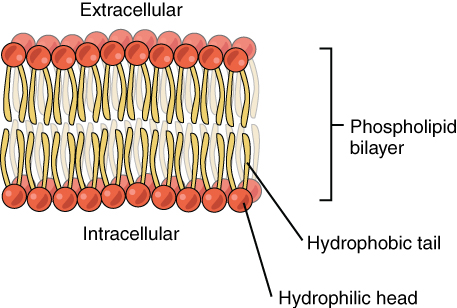To which cell structures do lipids belong and their function?
1 Answer
the cell membrane of a cell consists of a phospholipid bilayer, and since the question seems broad - another cell structure associated with lipids is the smooth endoplasmic reticulum.
Explanation:
The cell membrane of cells consists of a phospholipid bilayer; in which there are two leaflets of the membrane that encases a cell cytoplasm against the outside environment.
From outside going inside, the layer is made up of hydrophilic, polar, phosphate heads (facing the aqueous extracellular environment) and hydrophobic, nonpolar lipid tails that are attached to the head facing inside. Hence, 'phospho'-'lipid'.
Since it is also a bilayer, there is another layer of lipid tails attached to phosphate heads that are facing the cytoplasm of the cell (intracellular environment).
 https://www.boundless.com/biology/textbooks
https://www.boundless.com/biology/textbooks
The function of a cell membrane is to ensure that the contents of the cell (its organelles and proteins) are encased within the cell's internal environment. It enables it to carry out its metabolic processes and store its nutrients, which it may not be able to do so if exposed to the external environment. It is a semipermeable barrier - to selectively allow the entry and exit of specific ions or molecules that it may need for cell metabolism.
The smooth endoplasmic reticulum is an organelle that is tasked with lipid synthesis and lipid metabolism. It creates lipids to transport towards the cell membrane if needed, using the Golgi network, and respectively, breaks lipids down as well.


